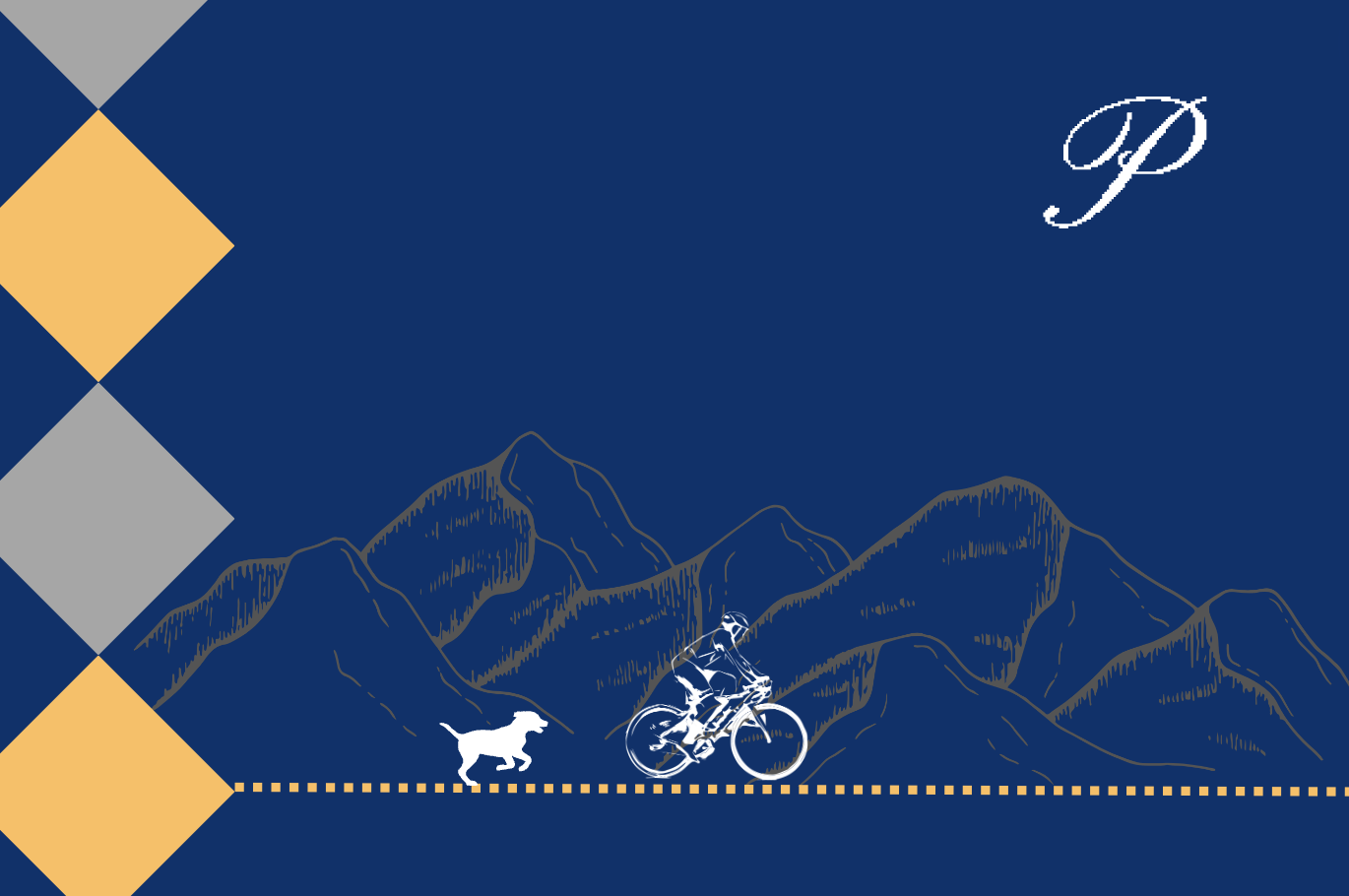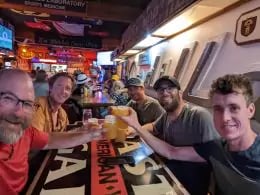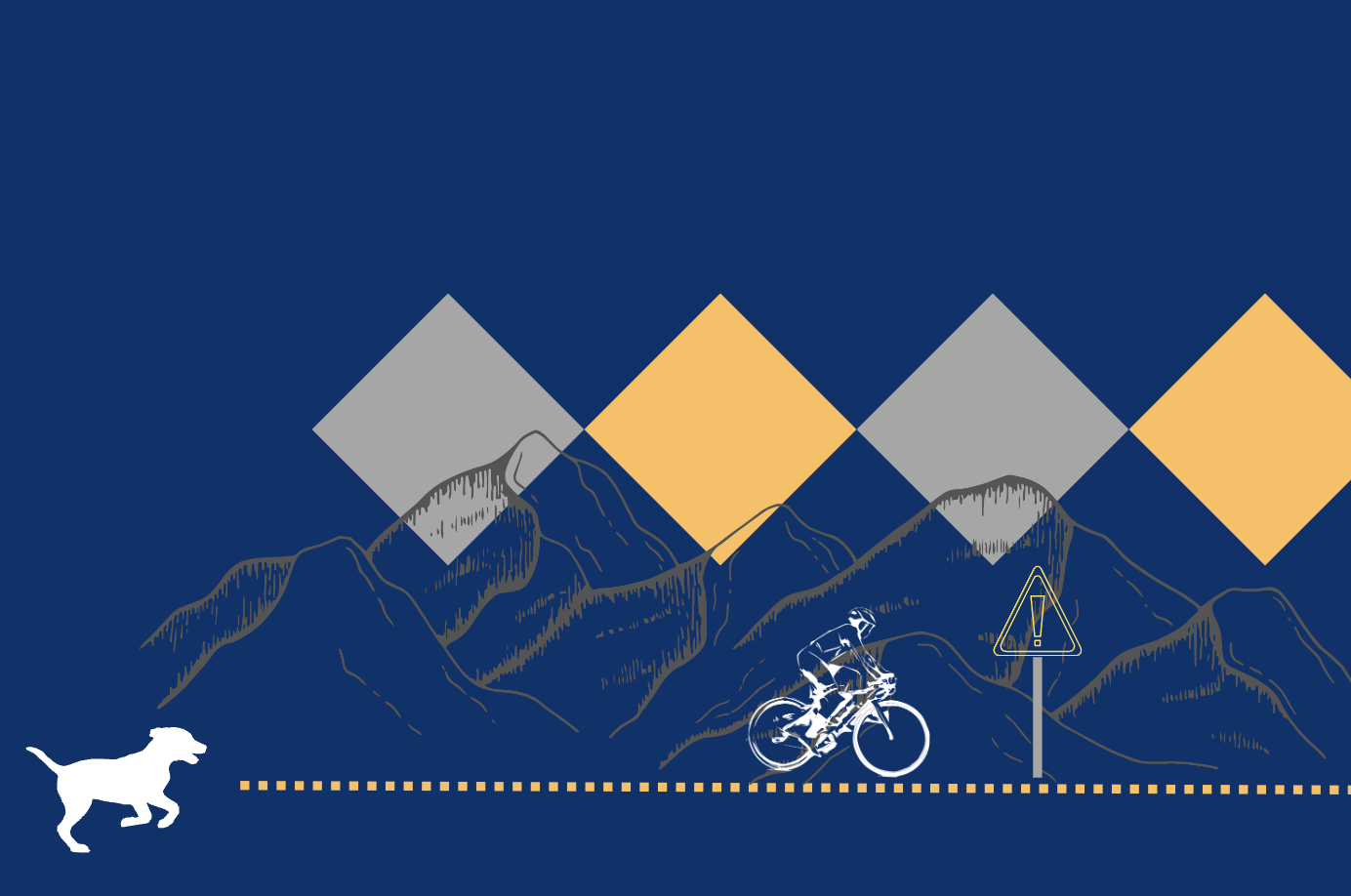7 Tips for Bikepacking the Great Divide

The Great Divide is the longest mountain bike trail in the world -- which is exactly why I picked it for my first-ever bikepacking adventure. Go big or go home, right?
I was a novice bikepacker -- novice meaning brand new. I definitely wasn't certain that I could complete this trip and I really wasn't sure where to even start.
Over about 5 months, I took a crash course in bikepacking by conquering the toughest trail I could find: The Great Divide. While I'm certainly not a maintenance expert, mountain man, or even a cyclist, I can tell you a thing or two about the Great Divide -- starting with if I can do it, anyone can with the right preparation.
So, in the spirit of sharing, here are 7 tips that I learned while bikepacking the Great Divide.
7 Tips for Biking the Great Divide
1. There is no such thing as too much preparation.
The best thing that I did before leaving for my trip was read this book: Cycling the Great Divide. You might notice it's over 10 years old but even though this was published when Uber was invented, it still holds up as one of the best resources for bikepacking the Great Divide.
Here's why: It lays out a day-by-day trip of about 70 days on the trail. It describes the terrain, what to expect for weather, and where notable points of interest can be found (like food). It also provides some interesting context regarding the history of the land you're traveling through and why people still live there today. Needless to say, this book can definitely keep you cozy by a fire after a long day in the saddle. Unless they make some drastic changes to the trail, I would say this book is a must-have.
Aside from the book, I also read up on bike maintenance and prepared for different problems that might happen on the trail. I encountered flat tires, broken spokes, and a major deterioration of my tire tread that made uphill travel a pain in the ass -- literally. I might not have known how to fix all of these issues in the field, but I did familiarize myself with the severity of each problem so I could make informed decisions when out on the trail.
When it came to camping, I was pretty comfortable with my experience in the woods. However, having the right gear makes all the difference. Which leads me to my next point.
2. Bring the right gear.
From the bike to the tent to everything down to your socks, having the right gear for this trip will make all the difference. I've already shared my Great Divide Checklist and even put together a complete bikepacking gear list, so I'll spare you the details and just highlight some of the most important gear to spend your money on.
- Bikepacking/Gravel Bike: I would say you can't get too far without a bike, but then again people walk the Divide, too. Anyhow, you'll want to invest in a high-quality, durable bike. I opted for a Salsa Cutthroat, but saw plenty of other brands and models on the trail.
- Salsa Bike Panniers I back a lot of Salsa products here. I wish I could say it was a paid partnership, but alas I'm just a big fan. Their gear is top-notch and while it's pricey, it'll probably be the only set of panniers that I will ever need to buy.
- All Seasons Tent: The biggest mistake that I made was buying the wrong tent. I woke up night after night soaked in water from the humidity. Don't be like me, buy the right tent.
- Lightweight, Weather-Resistant Jacket: I absolutely loved my L.L. Bean Jacket, but anything that's relatively lightweight, well-insulated, and will hold up for a bit in the rain is a good choice for this trip.
- Great Divide Downloadable Trail Maps: At first, I gawked at the price of these and refused to buy them. I proceeded to spend my first week getting lost every day and guessing if I was actually on the trail. For peace of mind if anything else, I would strongly recommend taking the plunge and buying the full set.
3. Embrace the side quests.
What's a side quest you may ask? Side quests are the little adventures that you don't expect (or didn't want) but you're glad you saw them through anyway.
While it's great a have a set agenda and timeline, don't forget to enjoy the little things on this trip. Stop at a creek to soak your feet, get lunch in town, pet every dog you see. I highly recommend the huckleberry milkshakes native to the Montana, Idaho, and Wyoming regions.
My buddy Clemens would remind me to enjoy the trail. He would sleep in, make a big meal at camp, then take his time biking each day. I admire it because he didn't roll into camp exhausted and eager to relax. He would cruise in with a big grin on his face and plenty of energy to hang out for the evening. We went to bars, made friends everywhere, and even attended a music festival in Canada.
This trip isn't just about reaching the finish line -- you'll have more fun taking it moment by moment than worrying about when you're going to get to your destination.
4. Weigh your options - and your bike.
There are a ton of sites out there that can tell what to bring and what not to bring for this trip -- and on the trail, I saw bike setups that ranged from having nothing on the bike to fully packed, 18-wheeler-looking things.
Here's the point: On my first day, I got on the bike and it was fully loaded with water, food, gear, you name it. I had ridden it with most of the gear before, but this was the first time I was at 100% capacity. As my wheels touch the first dirt on the trail another rider comes speeding up beside me.
This guy was a self-proclaimed "tour-divide expert" (you'll meet a few of those). He was riding a bike with pretty much only water bottles on it. He said he had an "ultralight" setup and had studied the trail for years. He knew exactly what he wanted to bring, mapped out several places where he would restock gear, and made it clear that efficiency was his game.
I'm mortified. It's my first day. I've never done this before and my bike rack literally just collapsed under the weight of my gear. I felt like the biggest idiot lugging my bike up steep hills with bags upon bags stacked on it. But I kept at it and eventually figured out how much water to carry, how to better secure gear to my bike, how to walk it up hills, etc.
Fast forward to Whitefish, where I cross paths with our ultralight friend once more. This time, while I'm enjoying a night out on the town, he's sleeping under a picnic table in his bivy, shivering from the pneumonia he caught from getting stuck in the rain and having wet gear.
This guy was nice and I really did feel for him. But, the point is every setup is different. What's right for you might not be best for others. Don't worry too much about how your bike looks compared to others. Just focus on picking a setup that works for you and can last you throughout the trip.
5. Find an amazing support team.
I can honestly say that I could not have done this without the people who supported me during this trip. The easy callouts are the tangible things my family and friends did for me like helping me pack, flying out to Banff with me, and picking me up at the end of my trip. These were luxurious that not many other riders had and I can't thank them enough for the sacrifices they made to support me.
But, some of the most unsung contributions were made in the smallest ways. The folks who read the blog motivated me to keep going and their cheers in the comments kept me smiling every night. The phone calls from family members reminded me why I was out there and picked up when I needed it most. Even just checking in via my satellite tracker made me feel connected to my world and reassured me that somewhere someone is looking out for me.
When you're pinned in your tent, listening to God-knows-what barking at you, that support can get you through the long nights.
6. Talk to other Great Dividers.
Some of the most useful information that I obtained on the trail was from talking with other riders. If folks were headed south (same direction as me) I would confirm the trail route, look at maps with them, and review the forecasted weather. If they were headed in the opposite direction, I would ask them about the terrain, how much elevation there was, and if there were any interesting stopping points.
Aside from game planning, talking to people just kept you sane. Whether they are riders or not, most people are friendly around camp and are interested in hearing about your trip. People will be familiar with the trail and I had several interactions with folks who just wanted to help me in some way or another. Most people are kind and up and down the Great Divide I met amazing people who made the experience unforgettable -- except this one, we drank enough beers that I'm not sure anyone remembers what happened.

7. Give yourself some grace.
Now for the sappy tip. Be patient and give yourself grace.
What I mean by that is, you don't have to make it up that big hill. You can walk as much as you want. In fact, walk the whole thing if you'd like.
It's your trip, spend it how you want to. Know that you're going to make mistakes. You'll fix those, and then make more mistakes.
But, at the end of the day, you're going to have a blast -- so don't get hung up on the details. Like my Dad told me before I set off, "You only have to make it home."
You ready yet?
If this post did its job and you're ready to set out on the Great Divide, click the image below to download your copy of the Ultimate Bikepacking Gear List. If you still need some convincing, check out where our dog-filled story began by reading through my journey on the Great Divide Mountain Bike Route.


.webp?width=346&height=259&name=Seeley-Lake-Tour-Divide%20(1).webp) (
(

